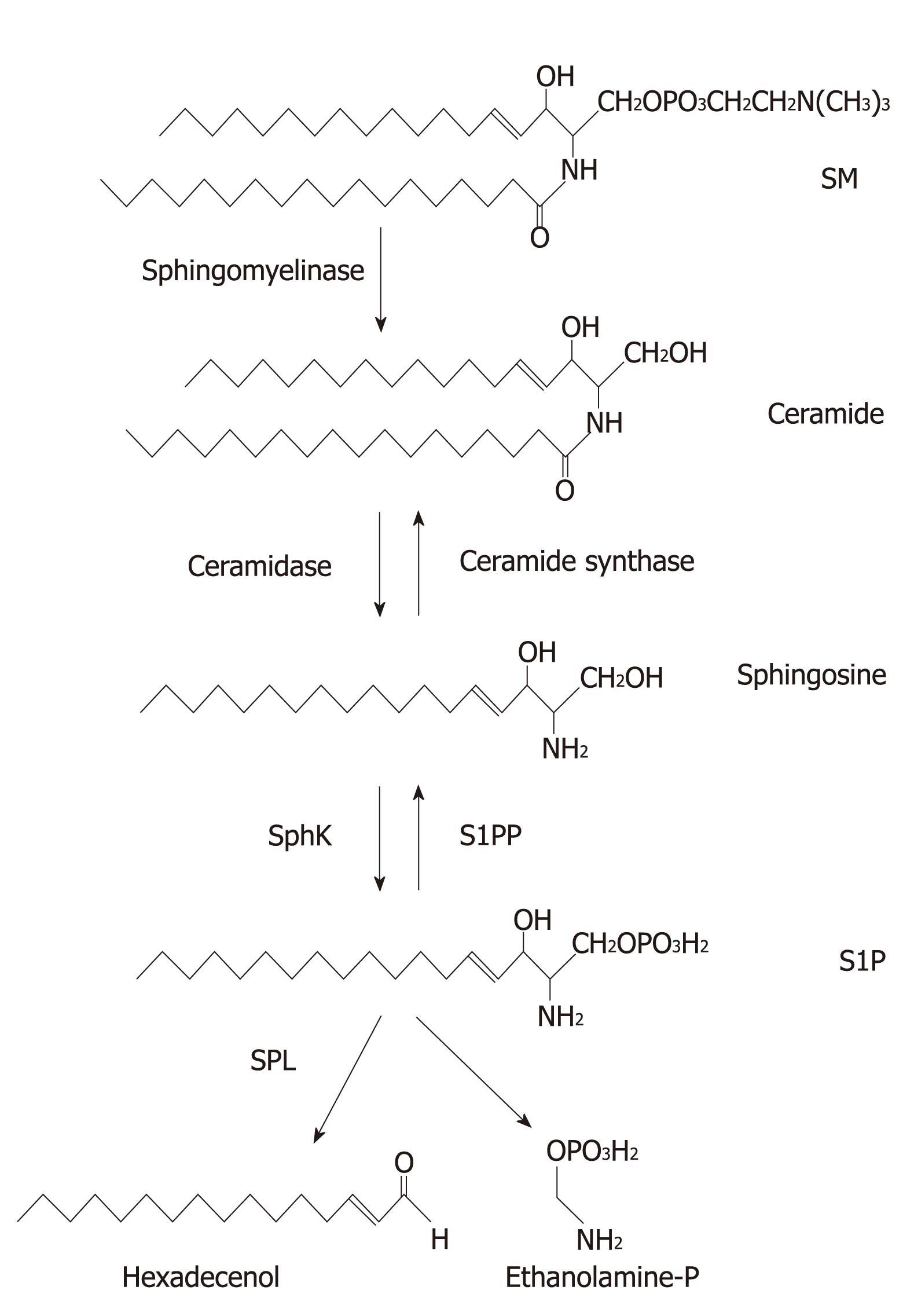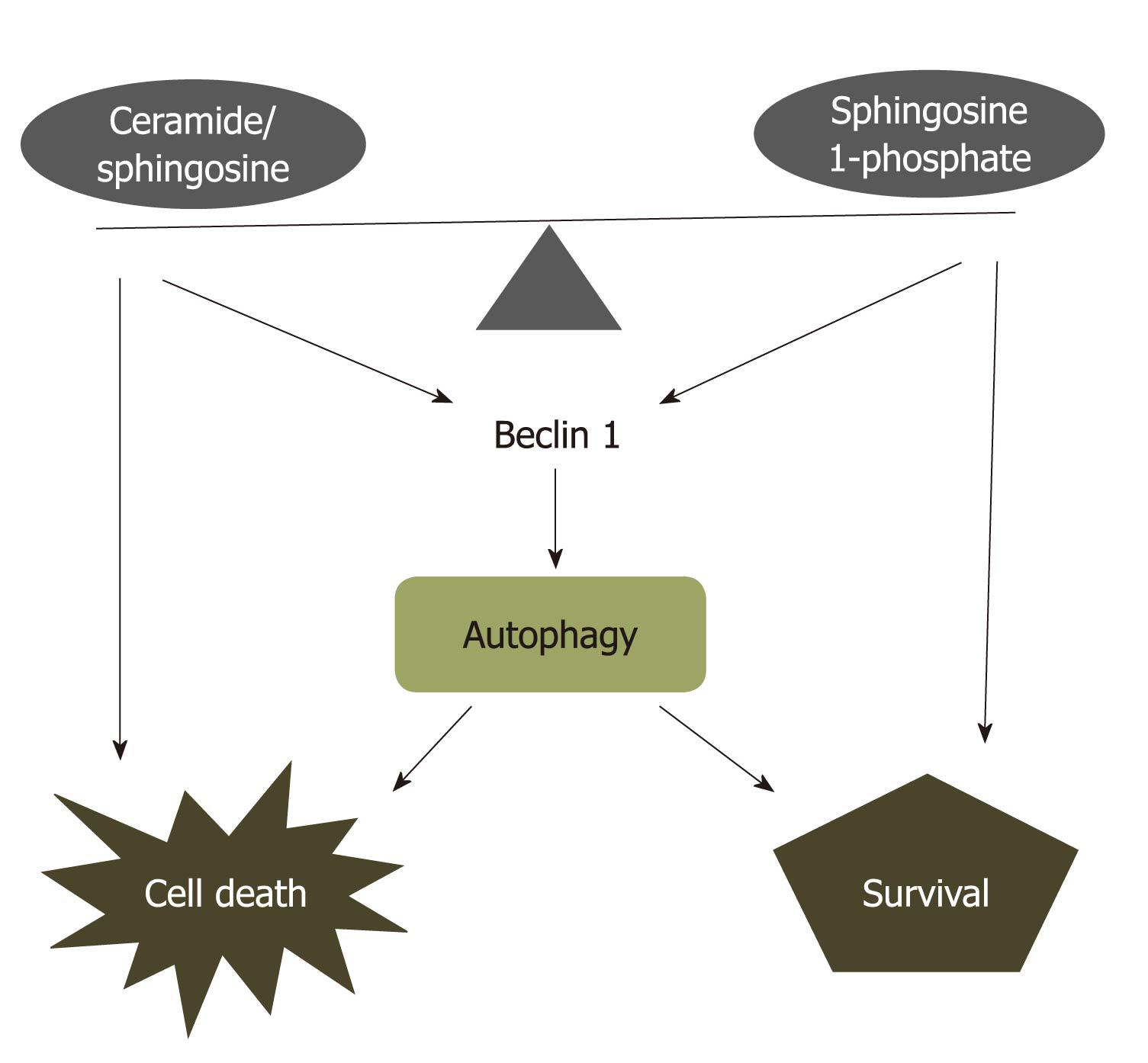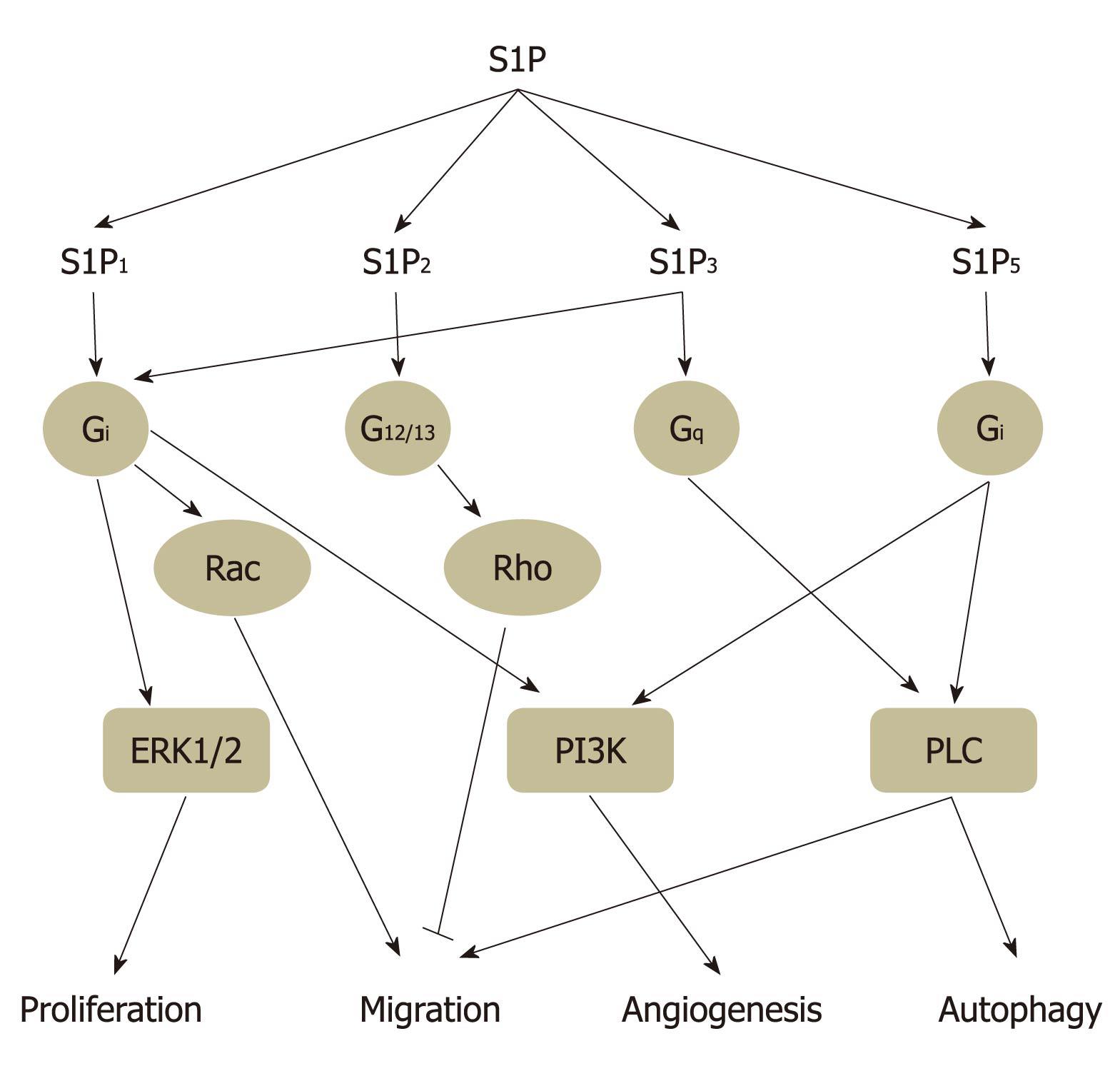Copyright
©2011 Baishideng Publishing Group Co.
World J Biol Chem. Feb 26, 2011; 2(2): 25-34
Published online Feb 26, 2011. doi: 10.4331/wjbc.v2.i2.25
Published online Feb 26, 2011. doi: 10.4331/wjbc.v2.i2.25
Figure 1 Sphingolipid structure and metabolism.
All sphingolipids contain a long chain base. Sphingomyelin (SM) is metabolized to ceramide by sphingomyelinase. Ceramide is further metabolized to sphingosine and sphingosine 1-phosphate (S1P) by ceramidase and sphingosine kinases (SphKs), respectively. Subsequently, S1P is irreversibly degraded to hexadecenal and ethanolamine phosphate by S1P ligase (SPL). S1P can be recycled to sphingosine and then ceramide by S1P phosphatase (S1PP) and ceramide synthase, respectively.
Figure 2 Ceramide-sphingosine-sphingosine 1-phosphate rheostat model.
Ceramide, sphingosine, and sphingosine 1-phosphate (S1P) with opposing functions are interconvertible within cells. The balance between ceramide/sphingosine and S1P forms a sphingolipid rheostat model, that is primed for cell death when the balance shifts towards ceramide or sphingosine, or to cell survival or proliferation when S1P levels are increased. This rheostat model also regulates autophagic cell death or survival through targeting to Beclin 1 which interacts with Bcl-2 protein.
Figure 3 Sphingosine 1-phosphate receptor subtype-specific signaling.
Sphingosine 1-phosphate (S1P)1, S1P2, S1P3, and S1P5 activate partially overlapping downstream signaling via coupling different G proteins and then regulate several biological functions, such as cell proliferation, migration, angiogenesis, and autophagy. Through coupling to Gi protein, S1P1 activates extracellular signal-regulated kinase (ERK)1/2, Rac, and phosphoinositide 3-kinase (PI3K) signaling to regulate cell proliferation, migration, and angiogenesis, respectively. S1P2 mediates inhibition of cell migration via G12/13-Rho signaling, whereas S1P3 enhances cell migration and angiogenesis through Gi-Rac and Gq-phospholipase C (PLC) signaling, respectively. Our unpublished results have revealed that Gi coupled-S1P5 induces autophagy which is mediated through PI3K and PLC signaling.
- Citation: Huang YL, Huang WP, Lee H. Roles of sphingosine 1-phosphate on tumorigenesis. World J Biol Chem 2011; 2(2): 25-34
- URL: https://www.wjgnet.com/1949-8454/full/v2/i2/25.htm
- DOI: https://dx.doi.org/10.4331/wjbc.v2.i2.25











